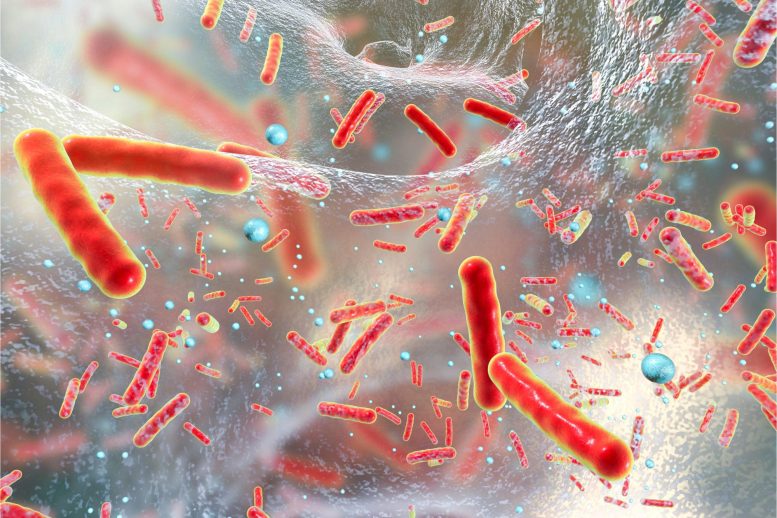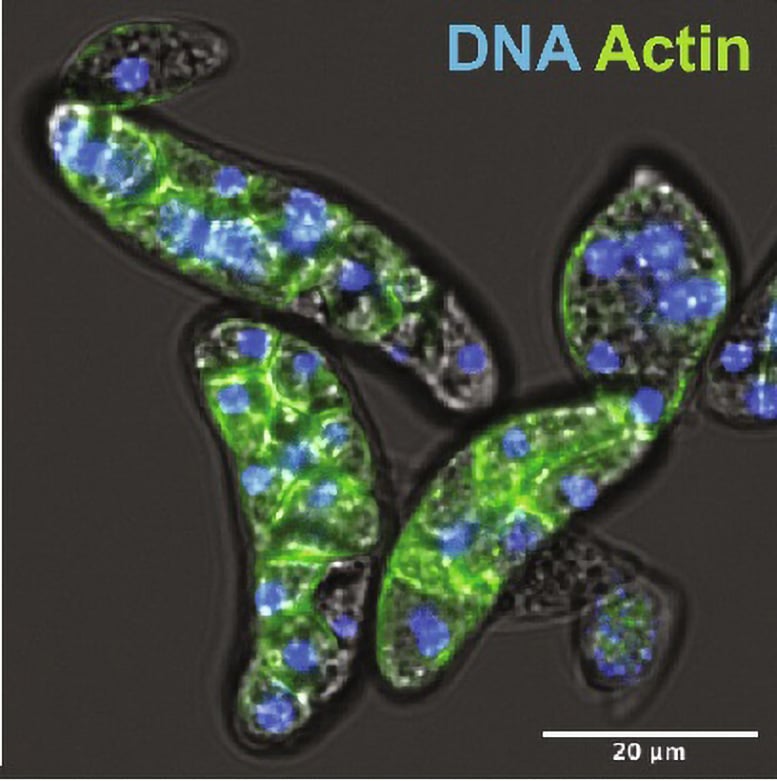
A new study has revealed that the genetic code of single-celled Amoebidium contains remnants of ancient giant viruses, offering insight into the genetic evolution of complex life. The discovery reveals that these viral genes, while potentially harmful, are kept inactive by chemical processes within the Amoebidium’s DNA, suggesting a more complex relationship between viruses and their hosts that could impact our understanding of the genetic evolution of other organisms, including humans.
Microorganisms reveal how our single-celled predecessors incorporated viral DNA into their own genomes.
Researchers have discovered remnants of ancient giant viruses in the genome of Amoebidium, a single-celled organism, suggesting that such viral sequences may have played a role in the evolution of complex life forms. The study highlights the dynamic relationship between viruses and their hosts, also reflecting human genetics.
A surprising twist in the evolutionary history of complex life has been discovered in a new study published in Scientific progressResearchers at Queen Mary University of London have discovered that a single-celled organism closely related to animals contains remnants of ancient giant viruses in its genetic code. The discovery sheds light on how complex organisms may have acquired some of their genes and highlights the dynamic interaction between viruses and their hosts.
The study focused on a microbe called Amoebidium, a single-celled parasite found in freshwater environments. By analyzing the Amoebidium genome, researchers led by Dr. Alex de Mendoza Soler, a senior lecturer at Queen Mary’s School of Biological and Behavioural Sciences, discovered a surprising abundance of genetic material from giant viruses, some of the largest viruses known to science. These viral sequences were heavily methylated, a chemical tag that often silences genes.
“It’s like finding Trojan horses hidden inside Amoebidium DNA“These viral insertions are potentially dangerous, but Amoebidium appears to control them by chemically silencing them,” says Dr. de Mendoza Soler.
The microbe Amoebidium appalachense undergoes its developmental cycle in the laboratory. Nuclei divide within a cell until maturity (~40h in the video), when each nucleus becomes a single cell and the colony breaks up giving rise to offspring. Credit: Alex de Mendoza
Current research and implications
The researchers then investigated the extent of this phenomenon. They compared the genomes of several Amoebidium isolates and found significant variation in viral content. This suggests that the process of viral integration and silencing is continuous and dynamic.
“These results challenge our understanding of the relationship between viruses and their hosts,” says Dr. de Mendoza Soler. “Traditionally, viruses have been thought of as invaders, but this study suggests a more complex story. Viral insertions may have played a role in the evolution of complex organisms by providing them with new genes. And this is made possible by chemically taming the DNA of these intruders.”

Amoebidium appalachense cells stained for DNA (blue, showing the nucleus) and actin (green), highlighting cell membranes in the colony cellularization stage. Credit: Alex de Mendoza
Additionally, the discoveries made on Amoebidium offer intriguing parallels with how our own genomes interact with viruses. Like Amoebidium, humans and other mammals have remnants of ancient viruses, called endogenous retroviruses, embedded in their DNA. While these remnants were previously thought to be inactive “junk DNA,” some may now be beneficial. However, unlike the giant viruses found on Amoebidium, endogenous retroviruses are much smaller, and the human genome is significantly larger. Future research can explore these similarities and differences to understand the complex interplay between viruses and complex life forms.
Reference: “DNA Methylation Enables Recurrent Endogenization of Giant Viruses in a Relative Animal” by Luke A. Sarre, Iana V. Kim, Vladimir Ovchinnikov, Marine Olivetta, Hiroshi Suga, Omaya Dudin, Arnau Sebé-Pedrós, and Alex de Mendoza, July 12, 2024, Scientific progress.
DOI: 10.1126/sciadv.ado6406



